Behind the Scenes with Pursuit’s Camera Wizard Marc Montocchio
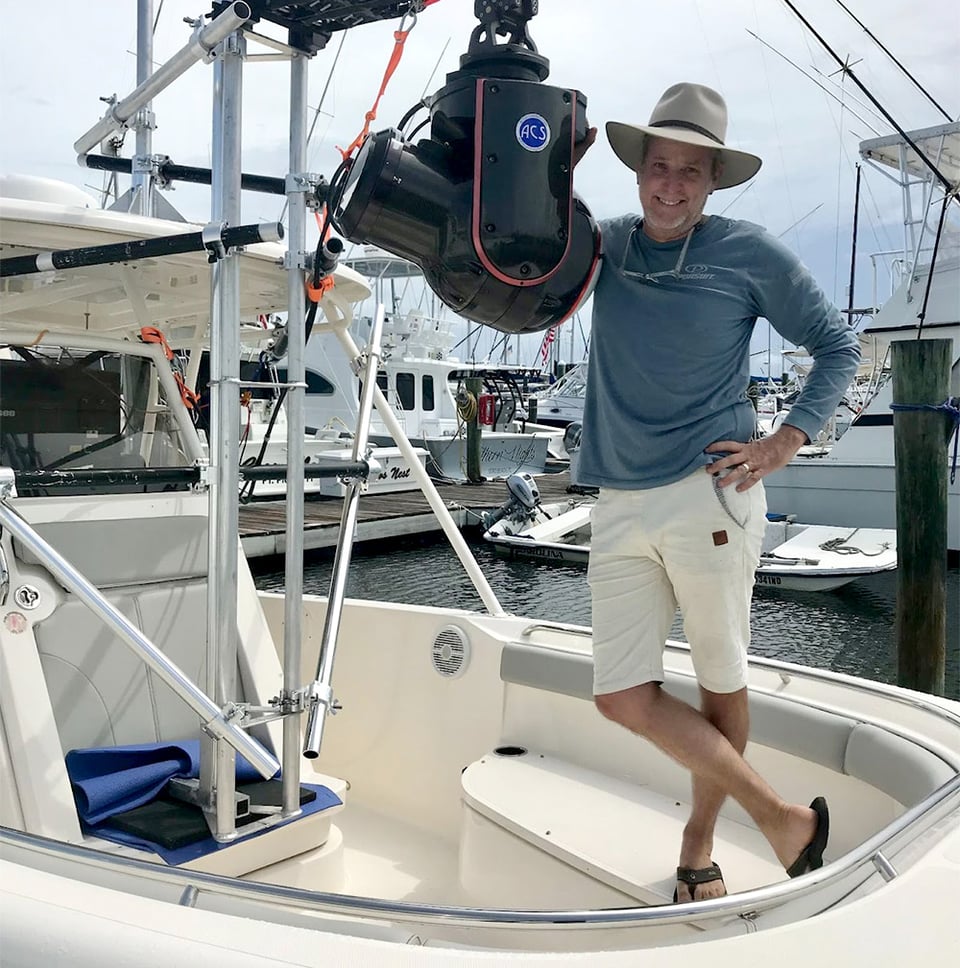
Today, we’re taking you on a high-speed, high-tech, high-flying behind-the-scenes tour of Pursuit Boats video shoots with our cameraman Marc Montocchio.
Marc has been shooting video and still photography for us for twelve years now. He’s the wizard responsible for every video and photo of our boats, whether they’re flying along at top speed or simply tied up at the dock, posing for photographs and walkthroughs.
Read on to find out all about what it really takes to shoot the videos and photos that help tell the story of the world’s finest boats.
A lifetime of saltwater adventures
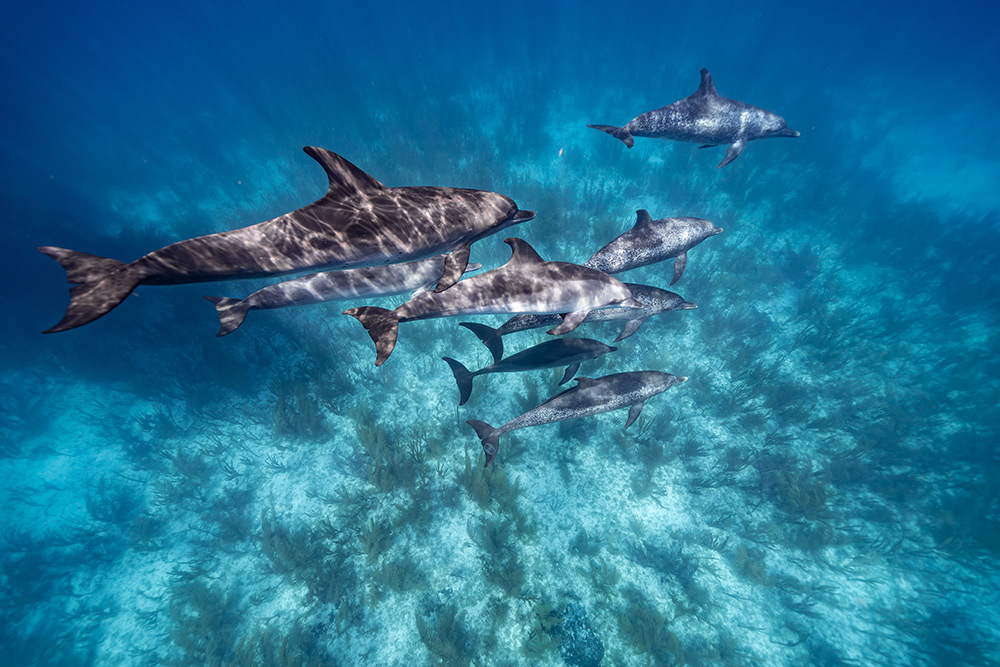
Originally hailing from South Africa, Marc has been in the US for about 20 years and currently lives in North Carolina with his wife Laura and their two fur babies. His current interest in boat photography is a natural evolution of his life that had largely been spent in and around the water. “I began shooting still photography, including professional underwater still photography for a long time while in the navy many years ago,” he recalled. “I started as an editorial marine photographer, shooting mostly wildlife and travel photography. I finally went professional in 1996.”
Having decided to take his sideline photography gig full-time, Marc soon began receiving inquiries from companies wanting their products photographed. Thus began his journey into commercial photography which would ultimately lead him to us. “During my early career, boats were always around,” he said, “but one day I got a call about twelve years ago in 2010, from the then marketing director at Pursuit who needed a photographer to shoot a lifestyle piece locally. That opportunity evolved into shooting lifestyle photography of boats.”
At the time, video was emerging as the format of choice for marketers and since Marc’s skill set and business were already heading in that direction, he was perfectly positioned to benefit from that trend. Unsurprisingly, it’s now his main line of business: “Video and camera operations have become my primary occupation now,” he confirmed.
The difficulty of filming boats
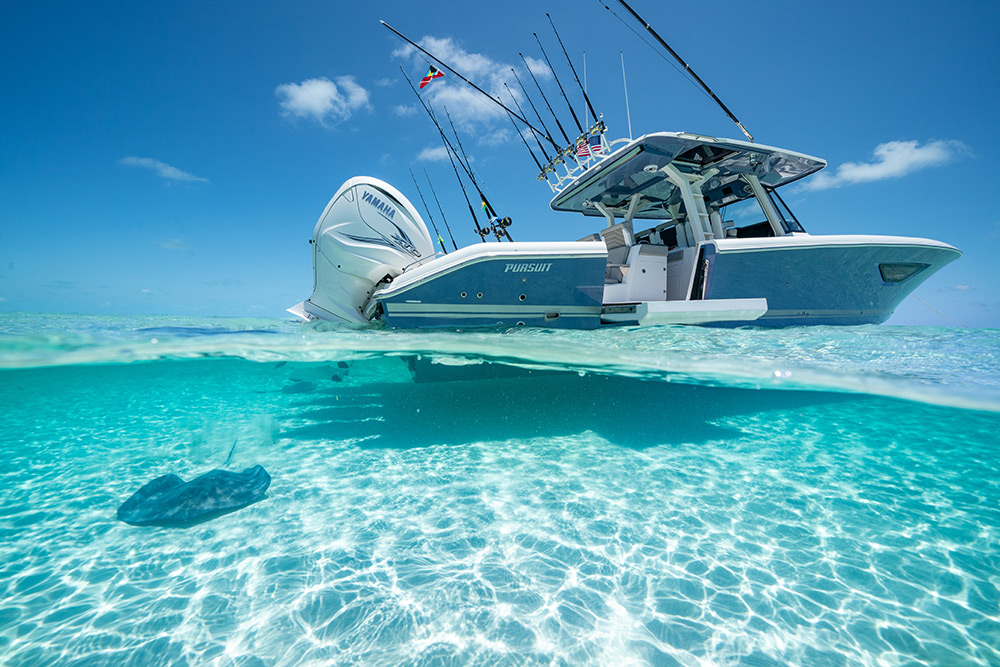
According to Marc, having the right gear is crucial to getting the perfect shots to really showcase Pursuit Boats. He emphasized that this is particularly true of video because while still photography has its own challenges, video is on another level of difficulty: “The primary issue with shooting boats, which makes it much more difficult, is the fact that you’re moving all of the time. Occasionally you’re on a dock filming a boat driving past, but most of the time we’re out on the water. Being able to work on a boat - a moving platform - whilst filming a moving subject - another boat - is a big deal, and that’s the challenge that has fed into our decisions around the technology we use.”
A look inside the kit bags
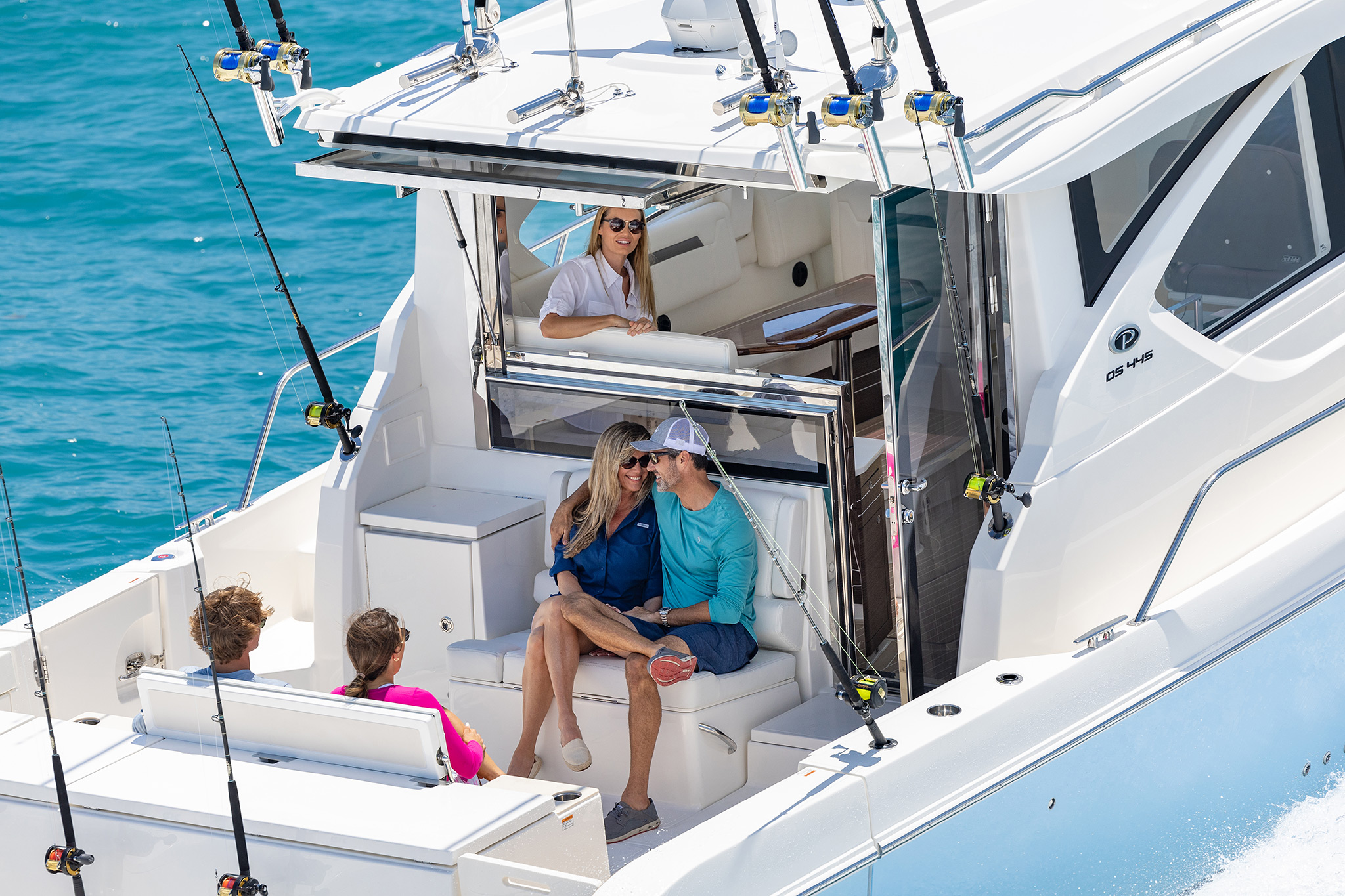
For video shoots, Marc relies on camera gear manufactured by premium US camera manufacturer Red, to which he adds the requisite components: “I’m a Red camera fanboy. It’s basically a high-tech box with a sensor and a processor. We then add power, cards and lens configurations depending on what we’re doing and what we’re shooting. I have two Red Helium bodies worth about $28,000 each.”
For still photos, Marc uses a Canon R3. “We have a special lens on the Canon for wide shots like interiors, deck, cockpit and bow seating,” he explained.
To overcome the challenges of shooting video from a moving platform, Marc has various pieces of equipment for image stabilization. In certain circumstances, he utilizes DJI’s Ronin 2 gyro platform. “It takes the Red camera and a specific weighted package,” he noted.
More recently, for boat-to-boat shots, he’s been using a very expensive, very high-tech GSS Cineflex. “The Cineflex was originally designed as a helicopter mount. It’s heavy - it weighs 140 pounds - and it allows us to fit our Canon 300 Cine lens. This rig allows us to zoom right into the hero/talent boat while we’re underway.”
“The Cineflex is expensive and costs several hundred thousand dollars,” he continued. “But it takes all of the movement out of the shot and allows us to see all of the detail that we’re looking for.”
Lately, he’s been experimenting with attaching the Cineflex rig to a Gremsy Duo Arm for even more stabilization. For Marc, it’s all about constantly pushing the boundaries to find the best solutions for his clients. “Part of my job is to constantly be looking for ways to shoot new images, and for new ideas. Clients expect that. It’s no good to become really good with a particular piece of gear and then just sit on your butt!”
Amy Gobel, Pursuit Boat’s Director of Marketing, agreed: “He knows how to make our boats look even better every time. He’s always bringing us new ideas and new technology.”
Getting airborne for the perfect shot
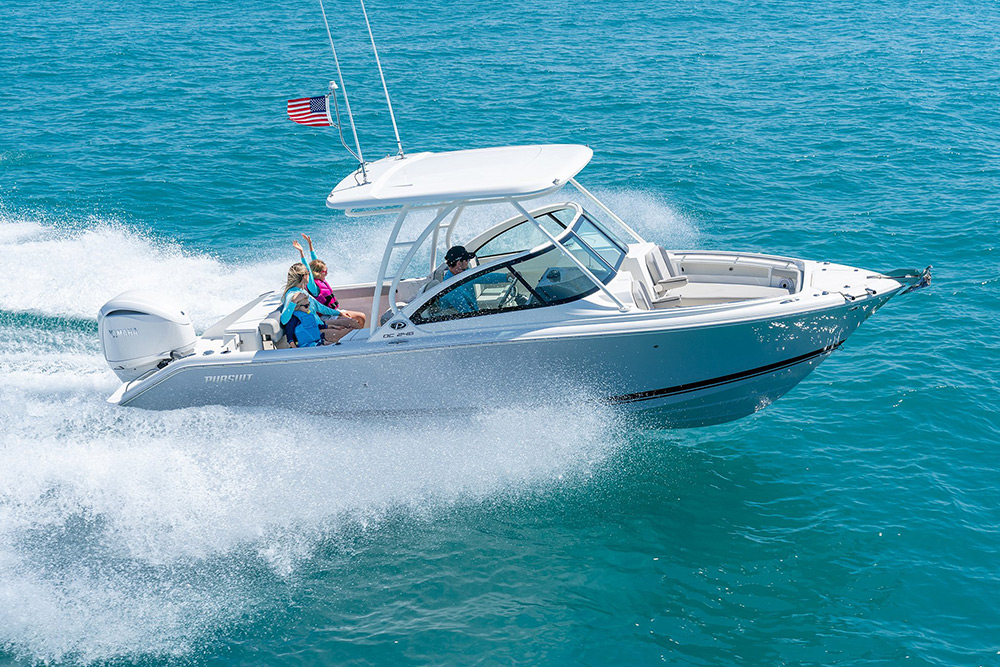
Some of our best videos and photos come out of the aerial shots that we film, but you might be surprised to learn that the majority of them are not shot by drones.
While drones have become a popular tool for so many aspiring filmmakers wanting to obtain aerial shots, Marc explained why helicopters are his first choice for professional aerial filmmaking and photography: “The boats only start to look really good when they reach a certain higher speed in the water - when they’re pushing water out of the chines the right way, when the spray is just right. When we start hitting 35 or 40 knots, the outboard boats especially look really good. At this point, there are very few drones on the market that can carry a 25-pound camera package with a professional camera, and still do 40 or 50 miles an hour. All while also shooting professional stills with multiple lens changes on the same flight mission.”
“It’s not just about being able to track the boat,” he continued, “but also to fly past, then circle back, etc. As things stand, the job is best done by a helicopter.”
“You also can’t zoom in and create parallaxes. So, a drone might be able to go 50 miles an hour but it’s just not going to compete with the large camera package we can carry in the helicopter. And also, offshore we deal with a tremendous amount of wind. That’s another reason we prefer to use helicopters.”
Aside from shooting video footage, Marc also shoots still photography from the helicopter. His Canon R3 mirrorless camera with its professional lenses together weighs a hefty amount, but it’s no sweat for the helicopter and its flexibility. “While we’re in the air, we can change lenses to achieve different looks, switch gear around. Most drones just don’t allow you to do these things,” he noted.
Drones have their place

It wasn’t all negativity about drones though - they still have their place in Marc’s arsenal. He highlighted lifestyle shoots where the subjects are static rather than moving at high speed. “If we’re working in places such as the Bahamas, getting lifestyle shots while the boat is anchored somewhere with people diving off it, for example, it’s so easy to just pop the drone up and film that environment. Nobody’s doing 50 miles an hour in 20 knots of wind. Using the drone means that we don’t make a huge noise and spray everybody, plus we also can’t afford to just have the helicopter waiting around on standby. So in that application, the drone is perfect.”
Advice for aspiring filmmakers
We asked Marc what advice he had for people who might aspire to build a career like his, and his advice was clear: “Just shoot, shoot and shoot some more! Never before has there been such a huge opportunity for aspiring photographers and camera operators to get into the marine industry, and much of that has been brought about by drones. But be sure to learn your craft really well and don’t assume that your drone piloting skills make you a cinematographer.”
“Learn to also use your camera to the point that it becomes second nature,” he continued, “to the point where you don’t even have to think about it. Learn to get the shot you need, regardless of the conditions around you and without the need for automatic functions on the camera. Real success comes with consistency, being solution-oriented towards your clients and bringing something new and fresh to the table. So get out there, look for opportunities and shoot!”
To see Marc's photography and videos visit pursuitboats.com.
